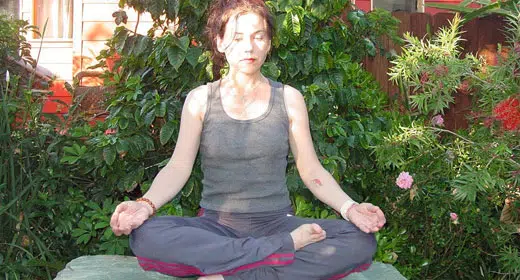by Daya Alexander Grant, Ph.D., M.S: Bravo, weekend warriors…
You work long days Monday through Friday but keep the commitment to move your body on a regular basis despite your busy schedule.
While I applaud you, I also offer a word of caution: be mindful of injuries. Jumping into a high intensity physical activity over the weekend after a rather sedentary existence during the week can put your body at risk for injury.
Whether you’re an all-the-time athlete, a weekend warrior, or a blend of the two, this article explains what you should keep in mind both before and after your workouts.
Hamstring strains, Achilles tendonitis, and low back pain are common injuries afflicting athletes and weekend warriors. The good news is that yoga is an effective way to prepare the body for movement and also help the body repair itself afterward.
Whether you’re an all-the-time athlete, a weekend warrior, or a blend of the two, this article explains what you should keep in mind both before and after your workouts. You will also learn how to use yoga to prevent injury with several yoga poses.
Athletes and Weekend Warriors: Here’s How to Use Yoga to Prevent Injuries:
Pre-Workout: Dynamic Stretching
Use yoga to prevent injury before you ramp up your heart rate and physically tax your muscles and joints. Commit to a 15-20 minute warm-up with dynamic stretching.
The purpose of dynamic stretching prior to engaging in a physically demanding activity is two-fold: First, warming up literally warms you up. It increases your body temperature by 2-3 degrees and allows the muscles and tendons to stretch more easily, which prevents strains.
Second, warming up activates the major support structures of the body, the spine and the core, which all work together to stabilize the rest of the body.
Below are the yoga poses that are perfect to use for your warm-up, along with the benefits of flowing through these yoga poses before you begin your workout.
Cat Cow Pose
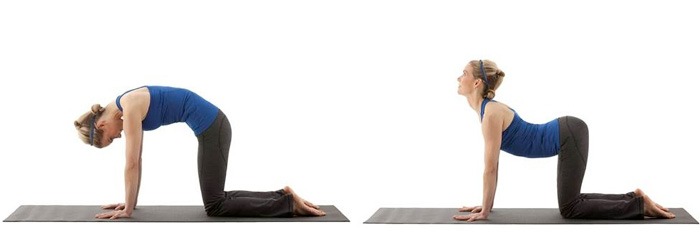
The back takes quite a hit from being hunched over a computer or a cell phone for hours each day. Smoothly moving through a few rounds of cat and cow allows your spine to access its full range of motion. This strengthens the spine and increases mobility, helping to prevent injury.
Forearm Plank
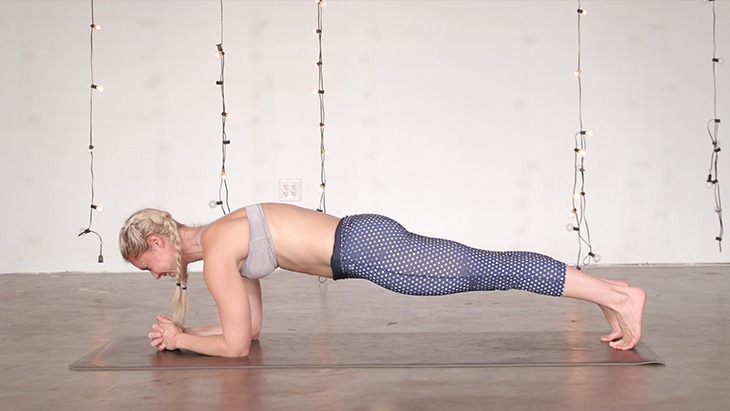
This plank variation strengthens all the core muscles, but most notably the transverse abdominis. These are the deepest core muscles, which are often overlooked with many supine core exercises.
Strengthening the transverse abdominis stabilizes the lower back and promotes proper alignment. In other words, a strong core helps prevent injury. Start with three 10-second holds and build up to one 60 second hold, without letting your hips or lower back sag.
Bridge Pose

The glutes and hip flexors are weakened by sitting, which destabilizes the pelvis and lower back and can lead to injuries. Bridge Pose is an excellent way to strengthen the glutes and open the hip flexors. Hold bridge pose for 5 breaths and repeat 2 or 3 times.
Sun Salutations
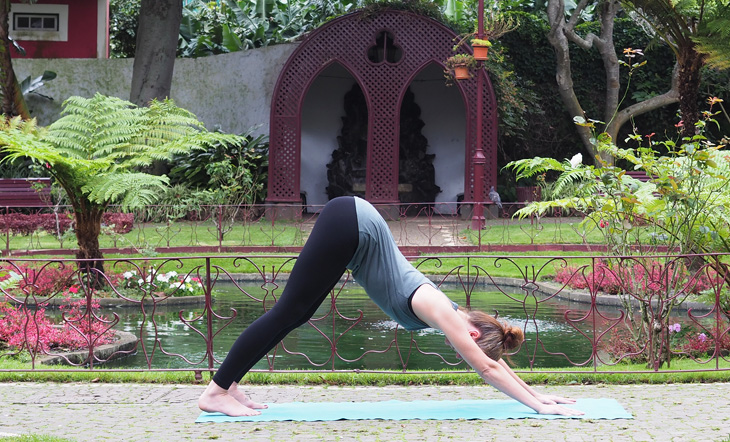
A slow flow is the perfect dynamic warm-up for the entire body. As you move through 3 or 4 rounds of Sun Salutations, focus on coordinating your breath with your movement. This breath control will translate to greater stamina in your workout.
Post-Workout: Static Stretching
Weekend warriors (and many athletes) are prone to skipping the cool down, all in the interest of saving time (even when they have much more of it over the weekend). However, allowing your heart rate to return to baseline while also stretching your muscles is important for maintaining physical health.
The post-workout period is the ideal time to perform a few static stretches. These longer holds should only be done once the body is warm, and there are a few reasons for this.
First, when muscles are cold they are less extensible, meaning they can only move through a more restricted range of motion.
Second, holding muscles in extension can actually reduce their force production, which impairs performance – that is certainly not something athletes and weekend warriors would want to do prior to pushing the body to its max.
For injury prevention after your sweat session, spend at least 10 minutes cooling down with the following yoga poses, plus any additional stretches that target the primary muscles used in your activity.
Each pose should be held for at least 30 seconds (5-10 breaths) to allow the muscles ample time to release and elongate.
These post-workout asanas (yoga poses) help repair your muscle tissues and prevent soreness, which can be a regular condition for weekend warriors and athletes alike.
Standing Forward Bend

The hamstrings are one of the most vulnerable areas for injury and can be difficult to lengthen. When your body is warm, stand with your feet hip-width distance apart and fold forward, keeping a micro-bend in your knees. Breathe deeply as you allow your hamstrings to stretch.
Reclining Half Pigeon
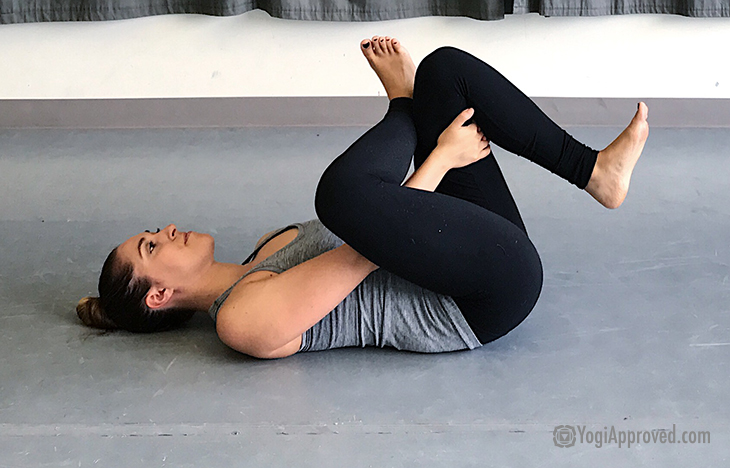
Lying on your back (as opposed to folding over your front leg in traditional Half Pigeon Pose) allows the muscles in your back to relax. Focus on sending breath to your hips and lower back, while keeping the muscles in your face and neck soft.
Dancer Pose
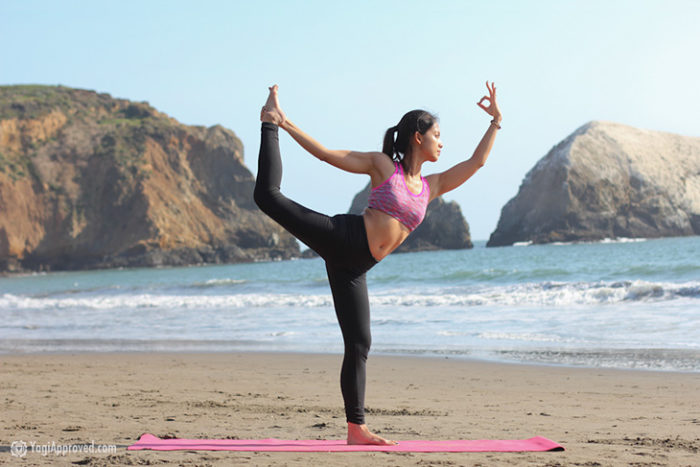
Any variation of this challenging yoga pose is great after an intense physical activity. You can simply stand on one leg, with the other leg bent and the foot in your hand to stretch the quadricep.
If the full variation of the pose is part of your practice, you will also benefit from a shoulder, chest and back opener. You can also try this balancing pose against a wall for added support.
Use Yoga to Prevent Injury: The Takeaway On Injury Prevention for Athletes and Weekend Warriors
While these yoga poses will help prepare you for a safe and effective physical activity, their injury prevention benefits will be even greater if you can incorporate them throughout the week.
Even 10 minutes of gentle movement in the morning (think Sun Salutations or core work can help maintain body awareness and mobility, which will serve you over the weekend. As an added benefit, this small amount of movement is good for your brain.
A 2018 study demonstrated that 10 minutes of slow pedaling on a stationary bike (barely raising the participants’ heart rate) immediately improved memory.
The study also showed that light exercise also better synchronized activity between different brain regions, namely the hippocampus, which is involved with memory, and parts of the cortex associated with learning.
Lastly, remember to keep your expectations realistic. You cannot expect to perform at the same level of intensity and skill as when you train consistently throughout the week.
Be wise with your intention for each workout, whether it’s only on the weekends or throughout the week as well.
And most importantly, consistently incorporate yoga into your warm-ups and cool downs to prevent injury, stay healthy, and keep having fun.


